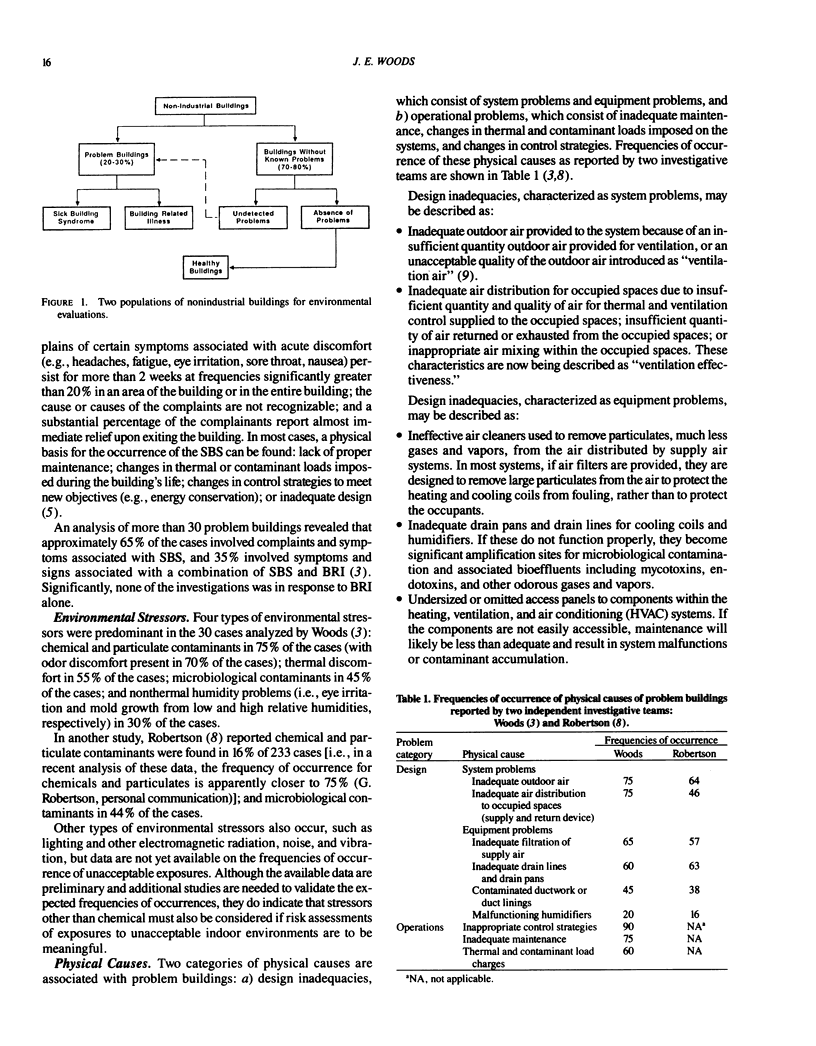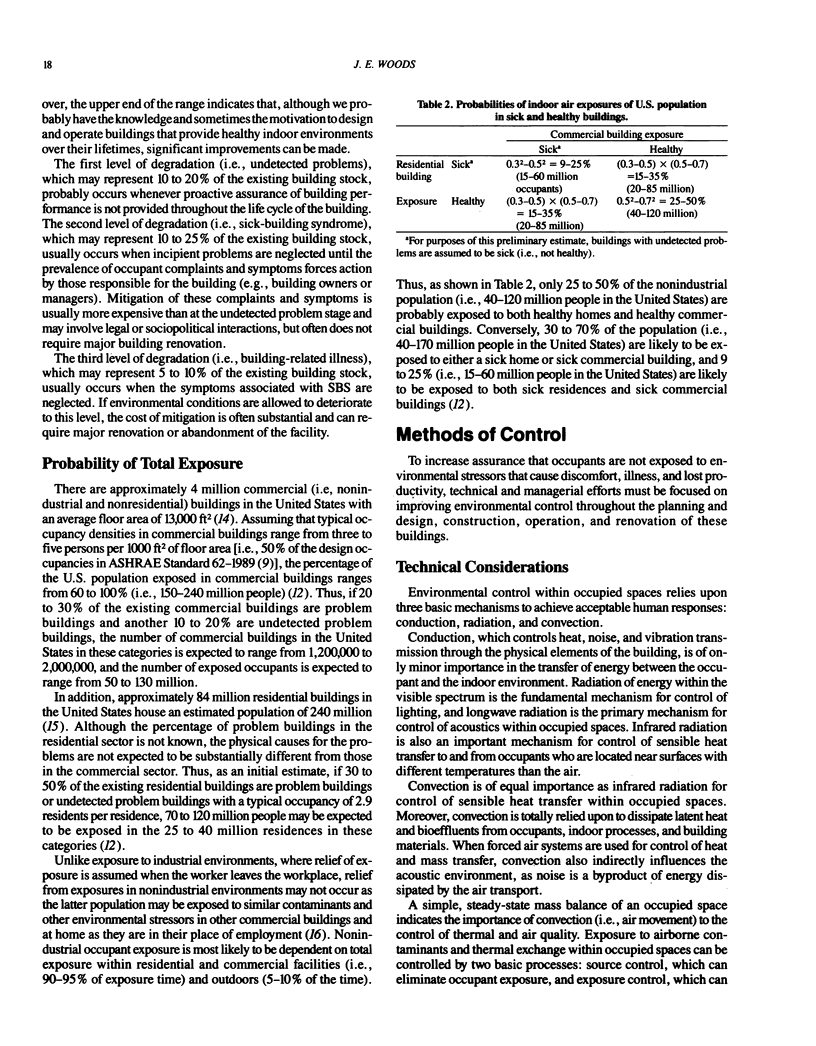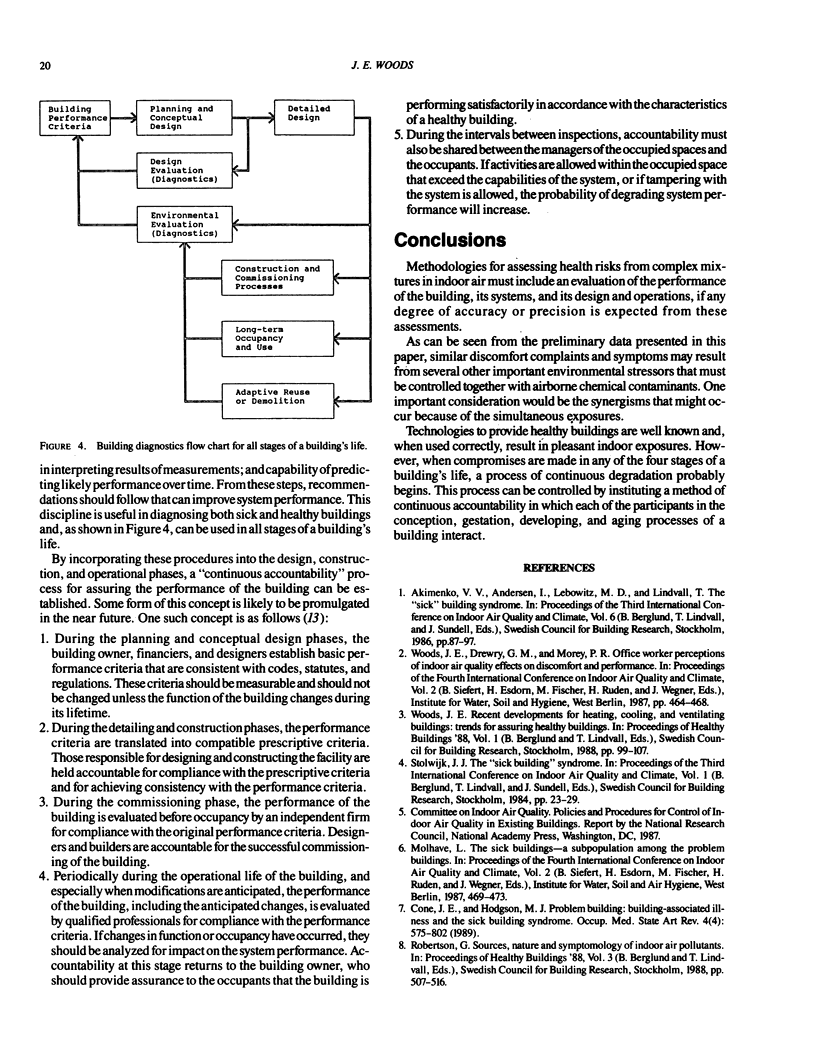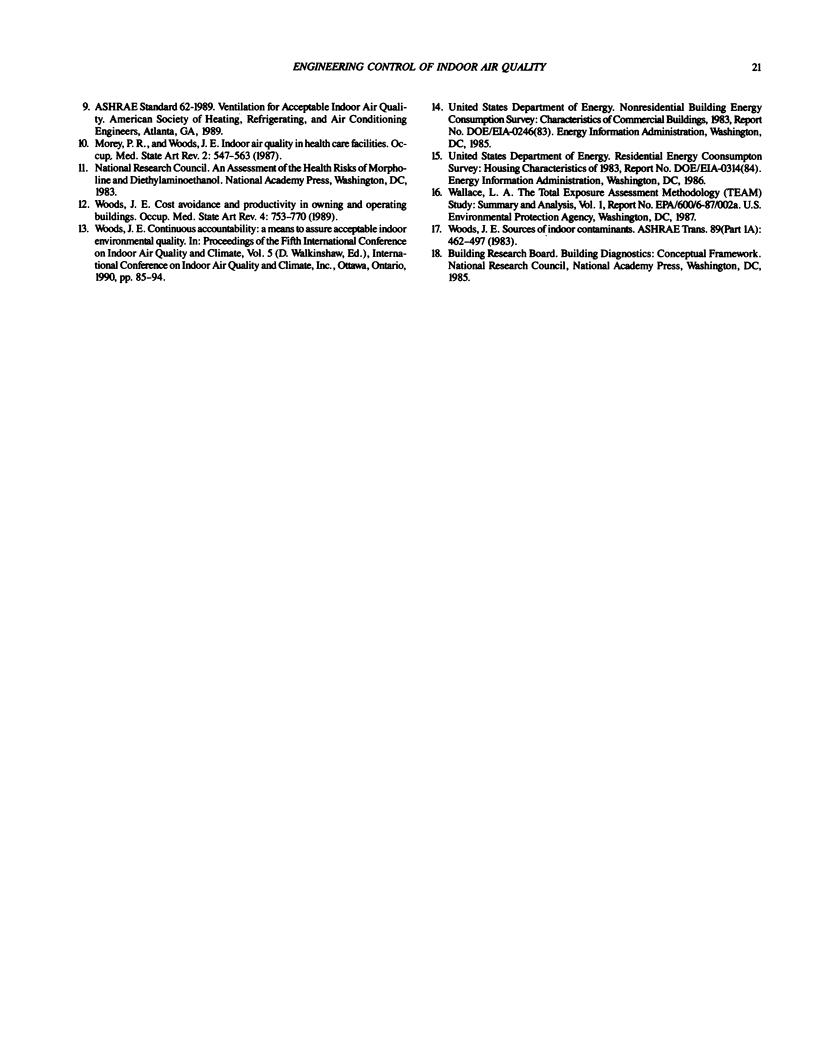Abstract
Evidence is accumulating that indicates air quality problems in residential and commercial buildings are nearly always associated with inadequacies in building design and methods of operation. Thus, the very systems depended on to control the indoor environment can become indirect sources of contamination if diligence is not exercised at each stage of a building's life: a) planning and design, b) construction and commissioning, c) operation, and d) demolition or renovation. In this paper, an engineering perspective is presented in which the existing building stock is characterized in terms of its environmental performance. Preliminary data indicate that 20 to 30% of the existing buildings have sufficient problems to manifest as sick-building syndrome or building-related illness, while another 10 to 20% may have undetected problems. Thus, only about 50 to 70% of the existing buildings qualify as healthy buildings. Two methods and three mechanisms of control are described to achieve "acceptable" indoor air quality: source control and exposure control. If sources cannot be removed, some level of occupant exposure will result. To control exposures with acceptable values, the primary sensory receptors of the occupants (i.e., thermal, ocular, auditory, and olfactory) cannot be excessively stimulated. The three exposure control mechanisms are conduction, radiation, and convection. To achieve acceptable occupant responses, it is often practical to integrate the mechanisms of radiation and convection in heating, ventilating, and air conditioning systems that are designed to provide acceptable thermal, acoustic, and air quality conditions within occupied spaces.(ABSTRACT TRUNCATED AT 250 WORDS)
Full text
PDF






Selected References
These references are in PubMed. This may not be the complete list of references from this article.
- Morey P. R., Woods J. E. Indoor air quality in health care facilities. Occup Med. 1987 Jul-Sep;2(3):547–563. [PubMed] [Google Scholar]
- Woods J. E. Cost avoidance and productivity in owning and operating buildings. Occup Med. 1989 Oct-Dec;4(4):753–770. [PubMed] [Google Scholar]


